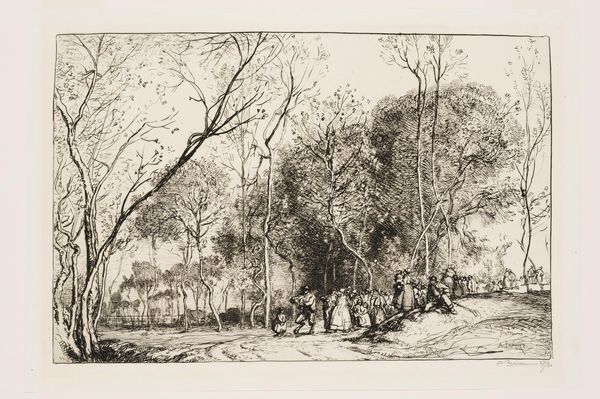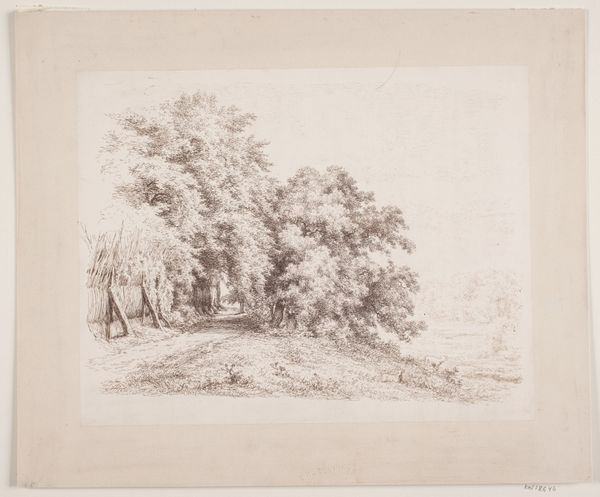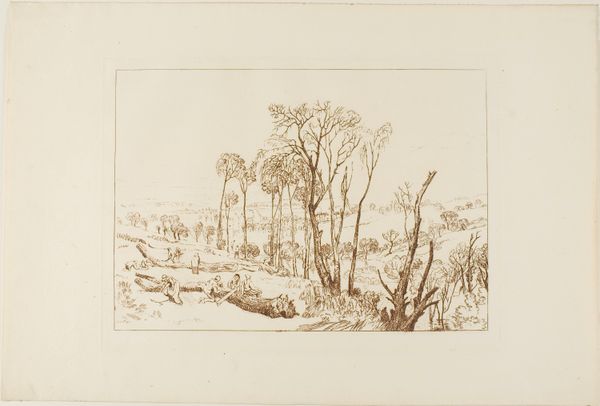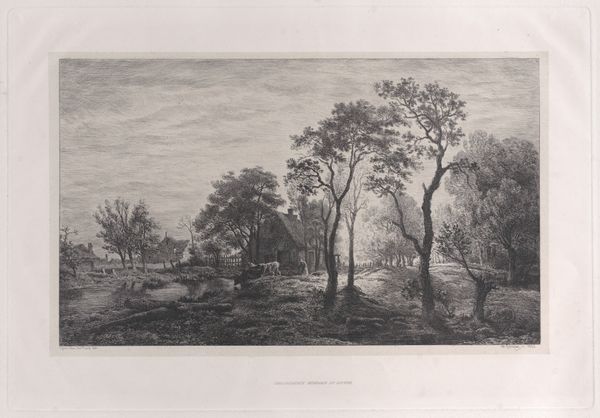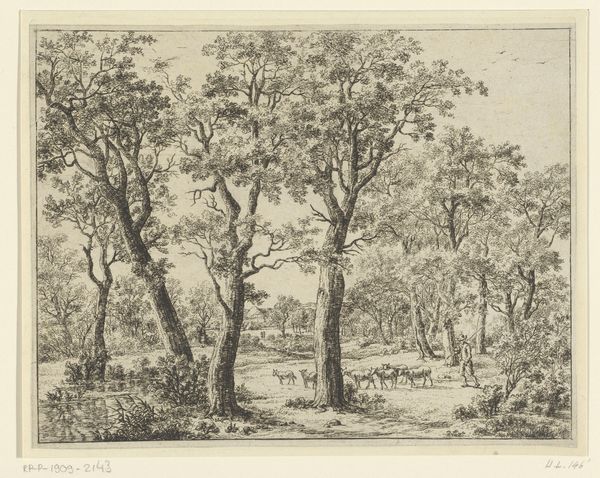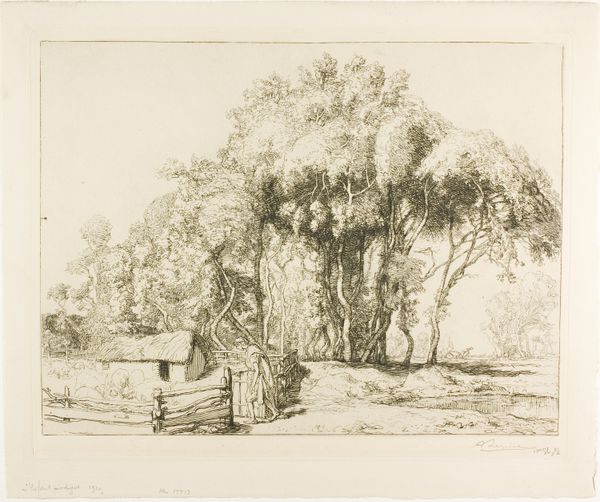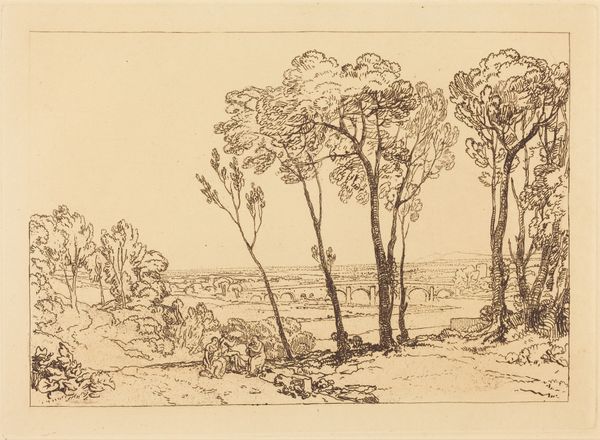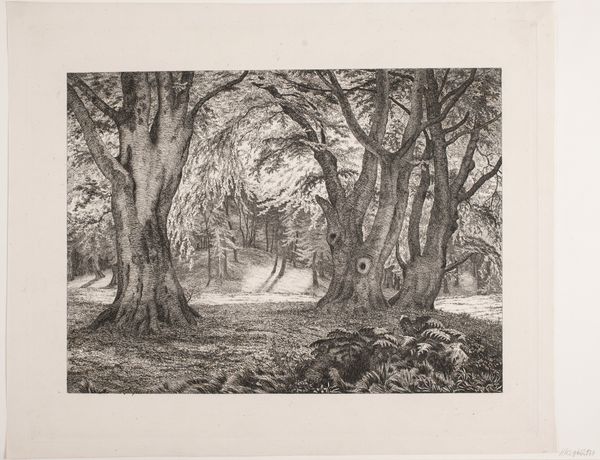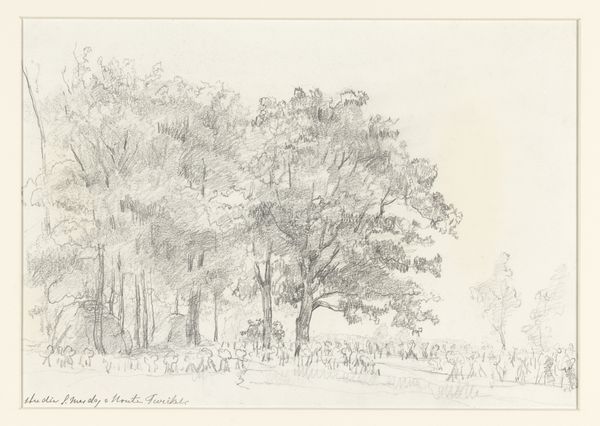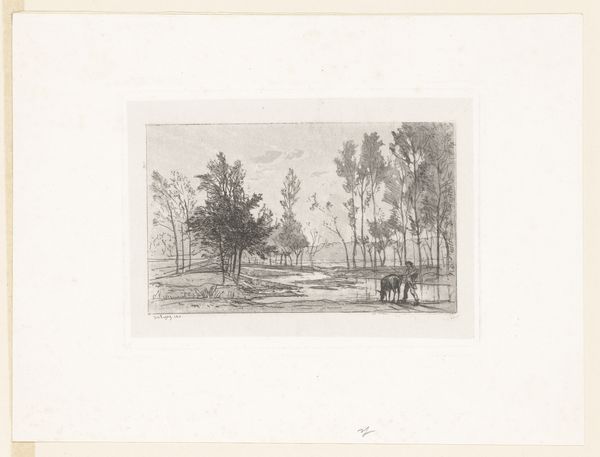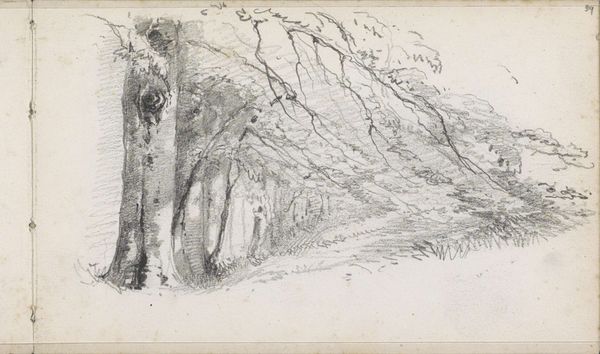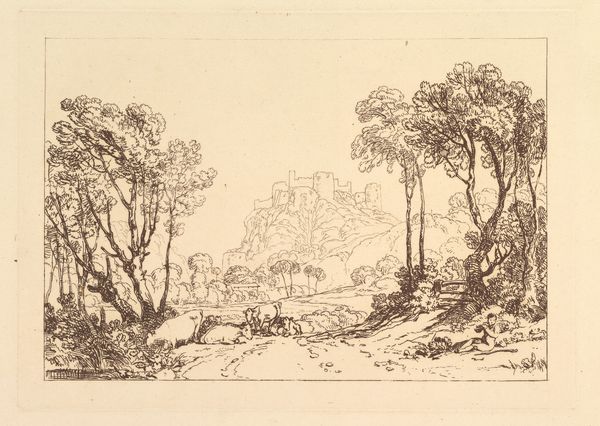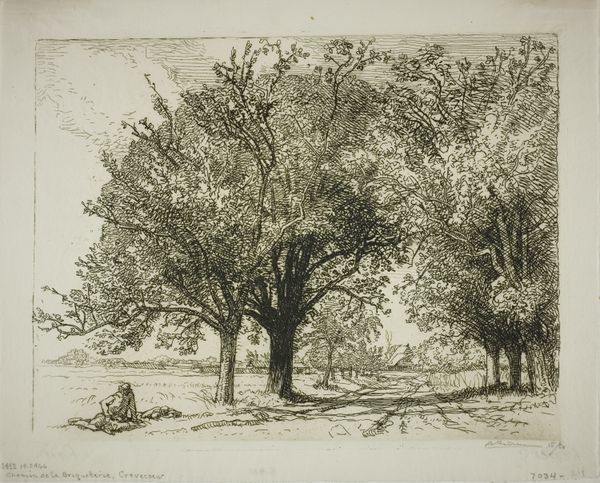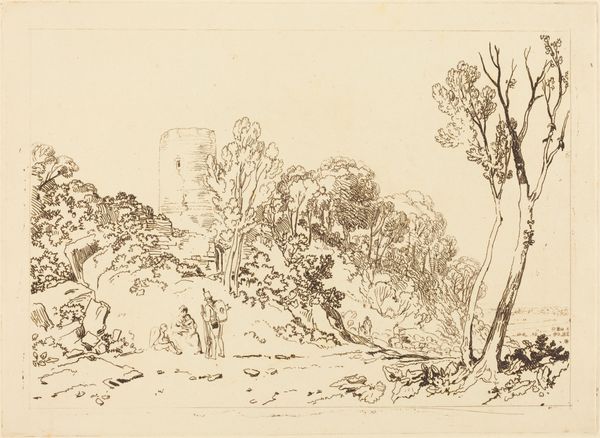
Dimensions: 246 × 376 mm (image); 280 × 396 mm (plate); 349 × 483 mm (sheet)
Copyright: Public Domain
Curator: This ink and etching print by Auguste-Louis Lepère is entitled "Summer of Saint-Martin: The Passing Wedding" and dates to 1908. I'm immediately struck by the overall delicacy. What are your first thoughts? Editor: Delicate, certainly, but also deeply laborious. Look at the sheer density of lines, all etched and carefully applied. It speaks volumes about the craft involved, the repetitive, almost meditative act of mark-making on the plate. Curator: Indeed, the density does add a layer of complexity. Let's consider the composition itself. The procession of figures, likely the wedding party, provides a central motif framed by a very structural arrangement of trees and the receding path. What semiotic meaning can we draw from this? Editor: For me, the trees are essential. The image becomes a commentary on communal celebrations in contrast to the harshness of labor. You've got the festive wedding juxtaposed against this scene, rendered by what would have been, frankly, exhausting physical work. Curator: That's a fascinating tension to point out. I’m intrigued by how Lepère captures light using this technique. Observe the interplay of positive and negative space created by the myriad of lines. It nearly mimics impressionistic brushstrokes despite being a print. Editor: And that choice of subject adds another layer. Why a passing wedding, glimpsed almost by chance? Was this common celebratory culture? This print becomes a historical document by its existence. It captures this particular rural moment, mediated through the labor of printmaking. Curator: So, while you emphasize the conditions of making and the socio-historical record preserved through laborious practice, I am fascinated by how these marks on paper coalesce into such an ephemeral moment, the passing wedding—an impression if you will. Editor: Agreed. The convergence of that labor to reflect daily life provides valuable insight. It's more than an arrangement of formal qualities—it's a visual encoding of human experience embedded within materiality. I leave with a newfound appreciation for the effort behind even seemingly simple etchings. Curator: A final reflection on the aesthetic. Lepère elevates everyday ephemera to a scene worthy of meticulous detail and study, don't you think?
Comments
No comments
Be the first to comment and join the conversation on the ultimate creative platform.
